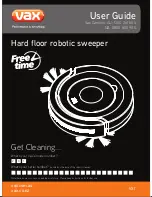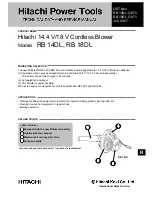
Traction Circuit Problems (continued)
No traction exists in either direction.
• The hydraulic-fluid level in the hydraulic tank is low.
• The transmission bypass valves are open.
• The charge pressure is low.
• The engine flywheel coupling is damaged.
• The transmission or wheel motor(s) is worn or damaged.
Note:
If 1 traction circuit component has internal wear or
damage, it is possible that the other traction components
are also damaged.
The wheel motor does not turn.
• The transmission bypass valve(s) is open.
• The transmission or wheel motor is worn or damaged.
Note:
If 1 traction circuit component has internal wear or
damage, it is possible that the other traction components
are also damaged.
The wheel motor does not hold load in the N
EUTRAL
position.
Note:
The machine may not be completely stationary if
parked on an incline without the parking brake engaged.
• The make-up fluid from the charge pump is not available.
• The check valves in the transmission are damaged.
• The valve plate(s) in the transmission is worn or damaged.
• The wheel motor is worn or damaged.
• The cylinder block assembly in the transmission
is worn or damaged.
A single-wheel motor turns while unloaded, but
slows down or stops when the load is applied.
• The wheel motor is worn or damaged.
• The transmission components (e.g., piston
pump, relief valve, and check valve) for the
problem wheel motor are worn or damaged.
Note:
If 1 traction circuit component has internal wear or
damage, it is possible that the other traction components
are also damaged.
The machine does not track straight.
Note:
If the machine does not track straight, look for a
problem with the components that affect the weaker traction
side of the machine.
• The external traction control linkage is incorrectly
adjusted, disconnected, binding, or damaged.
• The transmission bypass valve(s) is open.
• The brake is dragging or binding.
• The transmission-check valve is not seating or damaged.
• The transmission or wheel motor(s) is worn or damaged.
PTO Circuit Problems
Problem
Possible Causes
The cutting deck blades do not turn.
• An electrical problem exists; refer to
Electrical System (page 5–1)
.
• The engine coolant temperature is high.
• The transmission solenoid valve is stuck.
• The transmission charge pump is damaged
(the traction charge circuit is also affected).
• The transmission pressure valve is damaged.
• There is a problem with the cutting deck;
refer to
Chapter 7: Cutting Deck (page 7–1)
.
The cutting deck blade(s) turn too slowly.
• The engine speed is too low.
• There is a problem with the cutting deck;
refer to
Chapter 7: Cutting Deck (page 7–1)
.
The PTO does not stop when disengaged.
• An electrical problem exists; refer to
Electrical System (page 5–1)
.
• The transmission solenoid valve is stuck or damaged.
• The PTO brake friction plates are worn or damaged.
Groundsmaster 7210
Page 4–29
Hydraulic System: Troubleshooting
16222SL Rev C
Summary of Contents for Groundsmaster 7210
Page 4: ...NOTES Revision History Page 4 Groundsmaster 7210 16222SL Rev C...
Page 32: ...Specifications and Maintenance Special Tools Page 2 16 Groundsmaster 7210 16222SL Rev C...
Page 60: ...Diesel Engine Service and Repairs Page 3 28 Groundsmaster 7210 16222SL Rev C...
Page 196: ...Hydraulic System Service and Repairs Page 4 136 Groundsmaster 7210 16222SL Rev C...
Page 304: ...Chassis Service and Repairs Page 6 42 Groundsmaster 7210 16222SL Rev C...
Page 327: ...Drawing 105 7260 Rev E Sheet 1 16222SL Rev C Page A 3 Hydraulic Schematic g186843...
Page 328: ...Page A 4 16222SL Rev C Drawing 119 4372 Rev C Sheet 1 Electrical Schematic Platform g186842...
Page 329: ...Drawing 119 4377 Rev C Sheet 1 16222SL Rev C Page A 5 Electrical Schematic Engine g186841...
Page 336: ...Page A 12 16222SL Rev C Drawing 119 4386 Rev A Sheet 1 Wire Harness Drawing Cab Power g186851...
Page 342: ......
















































